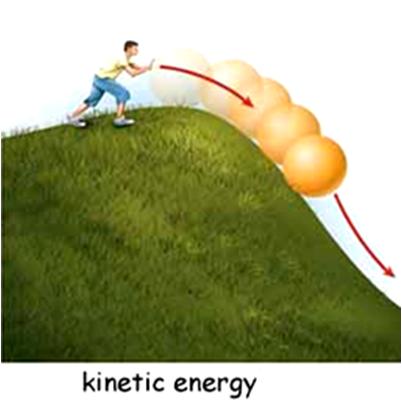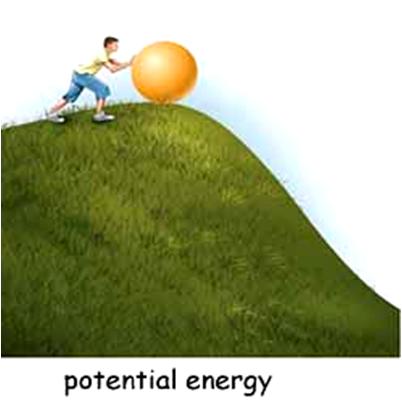Difference Between Kinetic Energy and Potential Energy

Energy is the ability to do work. It is derived from a Greek word “energeia” and is available in many forms. “Energy cannot be created or destroyed; it can only be changed from one form to another,” according to Albert Einstein. The various forms of energy are categorized into two main types – “Kinetic Energy,” and “Potential Energy.” These two main kinds of energy are different from one another in numerous ways, but they also work mutually in nature.
Potential energy can be changed into kinetic and then back to previous state (potential energy). Both major forms of energy are measured in “Joules,” denoted by “J”.
The energy that is already in use (motion) is Kinetic Energy. Potential Energy, on the other hand, is the energy that is stored.
Kinetic energy is transferable as it can be easily shifted from one moving thing to another. On the contrary, potential energy cannot be transferred at all.
Potential energy of an object is totally independent of its environment, but Kinetic energy of an item is fully dependent on the other objects (moving or static) in its surrounding.
Mass and speed/velocity are the determining factors of Kinetic energy while Potential energy is determined by mass and distance/height.
Instructions
-
1
Kinetic Energy
Kinetic energy is defined as “the energy an object possesses or displays by virtue of its movement (action or motion).” It is also called as “energy of motion. The word ‘Kinetic’ is derived from a Greek word “Kinesis,” meaning action/motion. It is denoted by K.E and is changeable. Baseball is one among the simplest examples of K.E.
When a pitcher grips the ball prior to a pitch – there is no kinetic energy in the object (ball). However, once the pitcher gets ready, K.E is used to throw the ball from his/her mound to the catcher’s gloves. Water falling from a waterfall is another good example of K.E.
Image Courtesy: btr.michaelkwan.com
-
2
Potential Energy
Potential energy is defined as “the energy which an object displays or possesses by virtue of its position or state (position of rest).” It is unchangeable/un-transferrable form of energy. It is denoted by “P.E.” it is also called as “Restoring Energy” as it has a propensity to force an object to come back to its original state of rest.
A rubber ball nicely demonstrates potential energy. Until it is not in motion, it has potential energy. Once you throw this ball in the air, the P.E converts into K.E. when the ball falls back to the ground and comes to rest, the K.E converts back into P.E.
Image Courtesy: btr.michaelkwan.com







